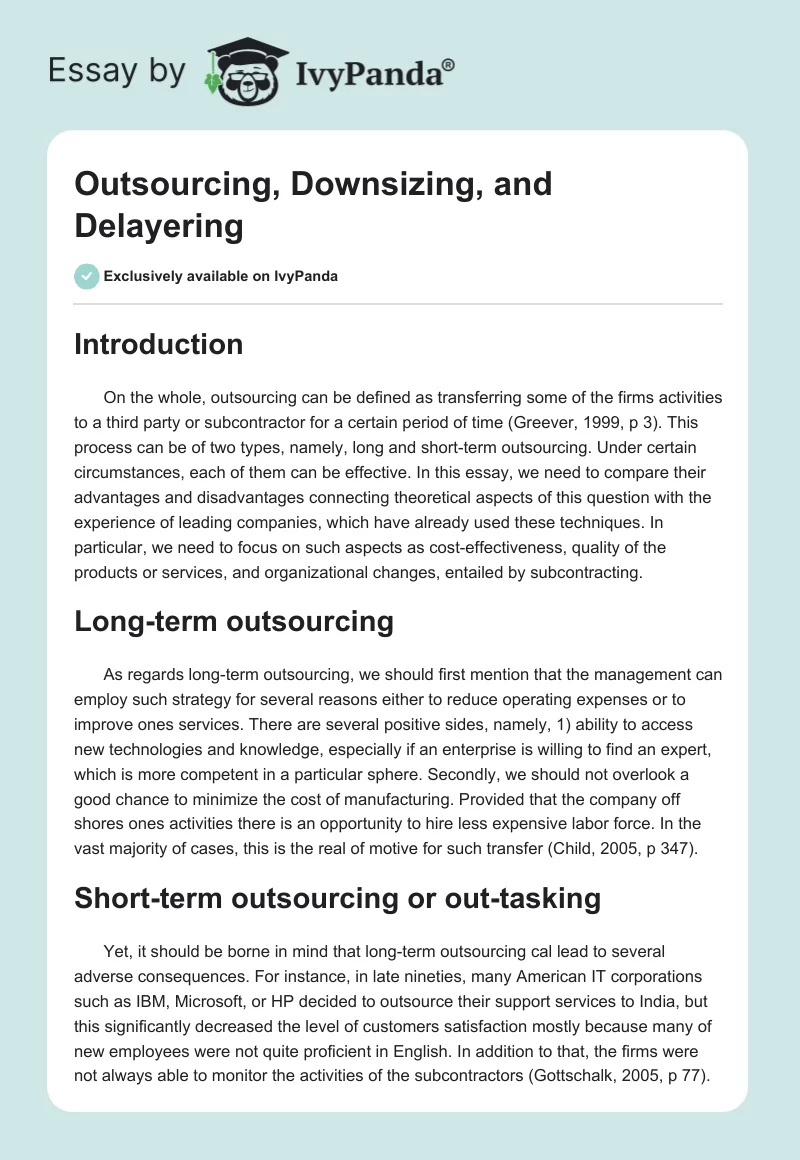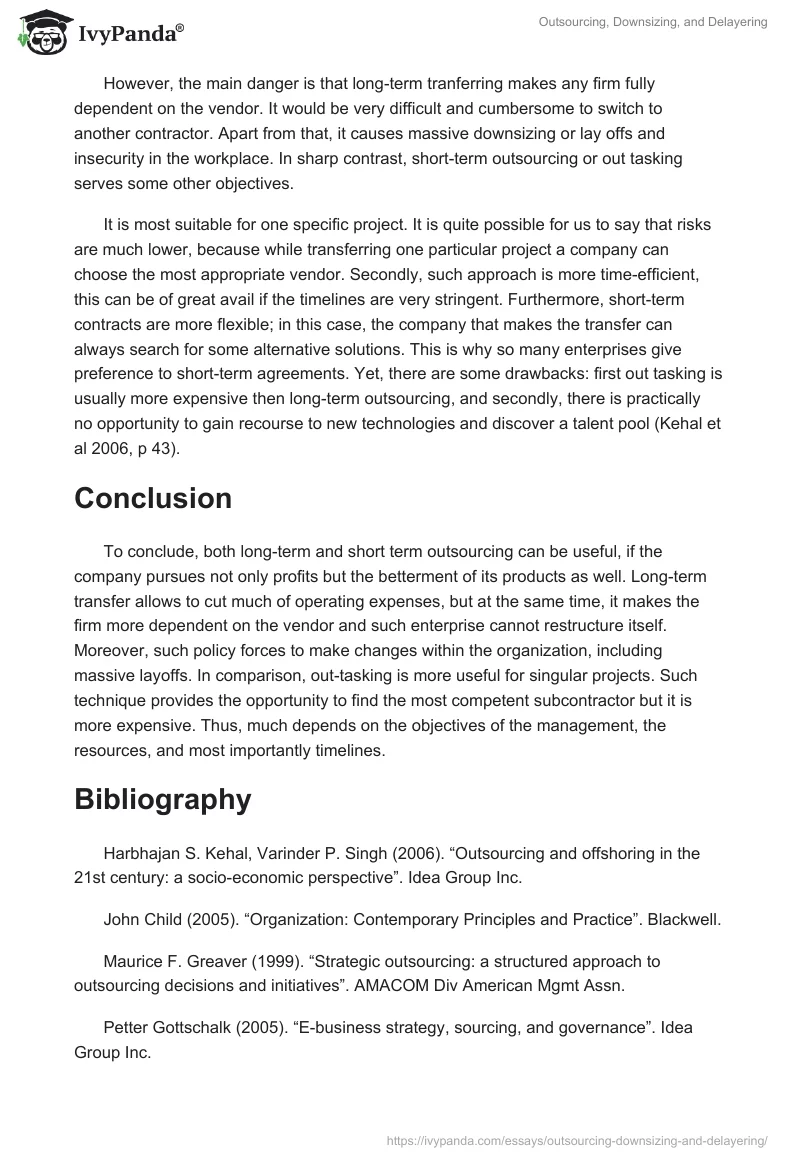Introduction
On the whole, outsourcing can be defined as transferring some of the firms activities to a third party or subcontractor for a certain period of time (Greever, 1999, p 3). This process can be of two types, namely, long and short-term outsourcing. Under certain circumstances, each of them can be effective. In this essay, we need to compare their advantages and disadvantages connecting theoretical aspects of this question with the experience of leading companies, which have already used these techniques. In particular, we need to focus on such aspects as cost-effectiveness, quality of the products or services, and organizational changes, entailed by subcontracting.
Long-term outsourcing
As regards long-term outsourcing, we should first mention that the management can employ such strategy for several reasons either to reduce operating expenses or to improve ones services. There are several positive sides, namely, 1) ability to access new technologies and knowledge, especially if an enterprise is willing to find an expert, which is more competent in a particular sphere. Secondly, we should not overlook a good chance to minimize the cost of manufacturing. Provided that the company off shores ones activities there is an opportunity to hire less expensive labor force. In the vast majority of cases, this is the real of motive for such transfer (Child, 2005, p 347).
Short-term outsourcing or out-tasking
Yet, it should be borne in mind that long-term outsourcing cal lead to several adverse consequences. For instance, in late nineties, many American IT corporations such as IBM, Microsoft, or HP decided to outsource their support services to India, but this significantly decreased the level of customers satisfaction mostly because many of new employees were not quite proficient in English. In addition to that, the firms were not always able to monitor the activities of the subcontractors (Gottschalk, 2005, p 77).
However, the main danger is that long-term tranferring makes any firm fully dependent on the vendor. It would be very difficult and cumbersome to switch to another contractor. Apart from that, it causes massive downsizing or lay offs and insecurity in the workplace. In sharp contrast, short-term outsourcing or out tasking serves some other objectives.
It is most suitable for one specific project. It is quite possible for us to say that risks are much lower, because while transferring one particular project a company can choose the most appropriate vendor. Secondly, such approach is more time-efficient, this can be of great avail if the timelines are very stringent. Furthermore, short-term contracts are more flexible; in this case, the company that makes the transfer can always search for some alternative solutions. This is why so many enterprises give preference to short-term agreements. Yet, there are some drawbacks: first out tasking is usually more expensive then long-term outsourcing, and secondly, there is practically no opportunity to gain recourse to new technologies and discover a talent pool (Kehal et al 2006, p 43).
Conclusion
To conclude, both long-term and short term outsourcing can be useful, if the company pursues not only profits but the betterment of its products as well. Long-term transfer allows to cut much of operating expenses, but at the same time, it makes the firm more dependent on the vendor and such enterprise cannot restructure itself. Moreover, such policy forces to make changes within the organization, including massive layoffs. In comparison, out-tasking is more useful for singular projects. Such technique provides the opportunity to find the most competent subcontractor but it is more expensive. Thus, much depends on the objectives of the management, the resources, and most importantly timelines.
Bibliography
Harbhajan S. Kehal, Varinder P. Singh (2006). “Outsourcing and offshoring in the 21st century: a socio-economic perspective”. Idea Group Inc.
John Child (2005). “Organization: Contemporary Principles and Practice”. Blackwell.
Maurice F. Greaver (1999). “Strategic outsourcing: a structured approach to outsourcing decisions and initiatives”. AMACOM Div American Mgmt Assn.
Petter Gottschalk (2005). “E-business strategy, sourcing, and governance”. Idea Group Inc.


